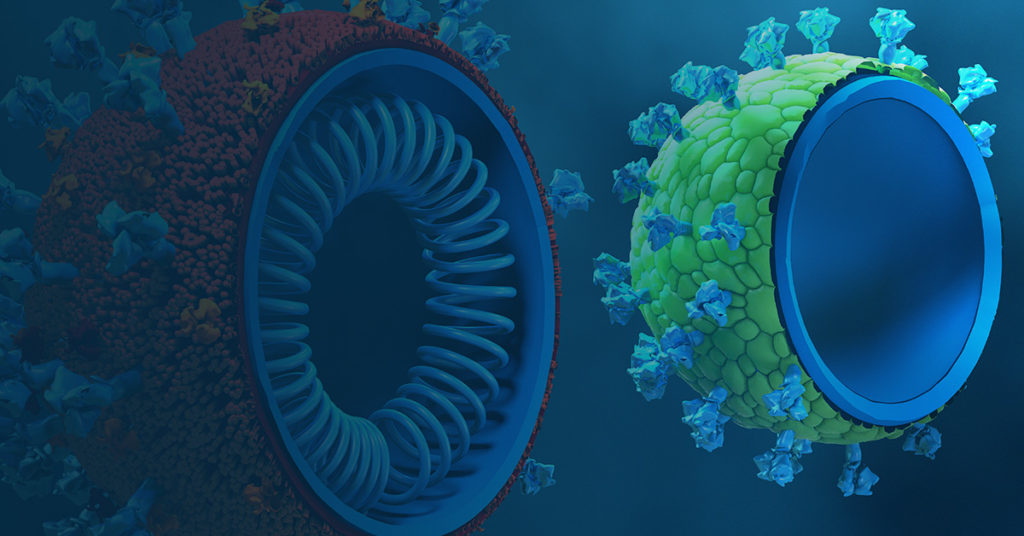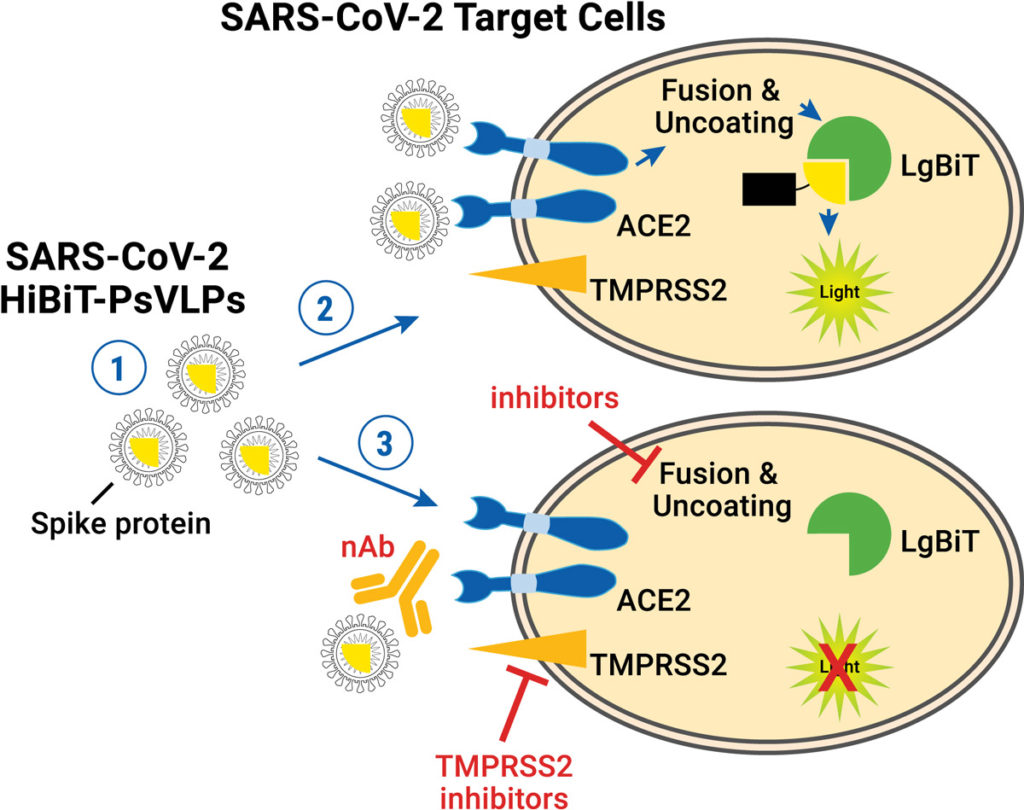Globally, there have been over 5 million deaths attributed to COVID-19 since the start of the pandemic. Throughout the ongoing battle against SARS-CoV-2, researchers have been studying the viral lineage and the variants that are emerging as the virus evolves over time. The more opportunities that the virus has to replicate (i.e., the more people it infects), the greater the likelihood that a new variant will emerge.
The US Centers for Disease Control and Prevention (CDC) classify SARS-CoV-2 variants into four groups: Variants Being Monitored (VBM), Variants of Interest (VOI), Variants of Concern (VOC) and Variants of High Consequence (VOHC). So far, no variants in the US have been identified as VOHC or VOI. Currently, the most common variant in the US is the Delta variant (which includes the B.1.617.2 and AY viral lineages), and it is classified as a VOC.
The Delta variant originated in India and spread rapidly across the UK before making its way into the US (1). Current vaccines, including mRNA and adenoviral vector vaccines, have demonstrated effectiveness against the Delta variant. However, it is a VOC because it is more than twice as contagious as previous variants, and some studies have shown that it is associated with more severe symptoms.
A recent study (2) provides one explanation for the higher infectivity of the Delta variant, using an approach based on virus-like particles (VLPs). The research team was led by Dr. Jennifer Doudna, 2020 Nobel Prize winner for her work on CRISPR-Cas9 gene editing, and Dr. Melanie Ott, director of the Gladstone Institute of Virology at the University of California–Berkeley.
What are VLPs?
One of the challenges of SARS-CoV-2 research is that working with live virus requires a biosafety level 3 laboratory. These facilities are specially designed to protect laboratory personnel and contain infectious agents; researchers also undergo a rigorous training program. Not all research laboratories have access to these specialized facilities. That’s where VLPs come in.

VLPs are particles that resemble the virus structurally, but they do not contain the viral genetic material. Therefore, they cannot replicate like the “real” virus and are noninfectious. Typically, VLPs can be prepared by expressing the right combination of essential viral proteins, which then assemble into the VLPs. Other proteins of interest can be introduced into the viral envelope, a process known as pseudotyping. In addition to studying virus function, VLPs can be used in a variety of applications, including vaccine development, drug delivery and gene therapy (3).
Previous research showed that SARS-CoV-2 VLPs could be constructed minimally from the viral membrane (M), small envelope (E) and Spike (S) proteins in mammalian cells (4) and in insect cells (5). Syed et al. were also interested in the nucleocapsid (N) protein, which has not been extensively studied but has been identified as a mutation hotspot (2). Among other functions, the N protein is associated with RNA binding and packaging. The researchers designed VLPs capable of delivering an exogenous RNA transcript into target cells, mimicking the action of the SARS-CoV-2 virus. They focused on a region of the viral genome (T20) that was thought to carry a packaging signal.
The researchers designed a transfer plasmid encoding a luciferase gene within the 3’ untranslated region of the T20 gene (2). Cotransfection of this construct, together with M/E, N and S expression plasmids into 293T cells resulted in the assembly of functional VLPs containing the T20-luciferase transcript. When these VLPs were added to 293T cells expressing the human ACE2 receptor, which is required for viral binding and entry, light was generated upon addition of the luciferase substrate. The proportion of each expression plasmid was optimized for maximum light emission.
Using this VLP system, the researchers examined a variety of N protein mutants, including those found in the Delta variant. They identified mutants corresponding to more transmissible strains of SARS-CoV-2 that increased delivery and expression of the exogenous RNA by ~10 fold; two mutants produced >50-fold more virus (2). The authors concluded that these results could help explain why some variants, like Delta, spread more easily and are more infectious.
SARS-CoV-2 HiBiT VLP Assay
Recently, Promega introduced an assay to measure the activity of small-molecule inhibitors and neutralizing antibodies (nAbs) that block the entry of SARS-CoV-2 into target cells. The assay uses VLPs pseudotyped with the S protein and takes advantage of HiBiT bioluminescence complementation technology to monitor viral entry in real time. Here’s how the assay works:

- VLPs pseudotyped with S protein and tagged with HiBiT are added to SARS-CoV-2 target cells expressing LgBiT.
- In the absence of inhibitors or nAbs, VLPs bind to target cells through interaction with the ACE2 receptor and another cell surface protein, TMPRSS2. The VLPs subsequently undergo membrane fusion mediated by cellular proteases. HiBiT protein is released into target cells and binds to LgBiT in the target cells to generate a luminescent signal in the presence of substrate.
- When inhibitors or nAbs are present, VLP entry and fusion with target cells are blocked. HiBiT release is prevented, and no luminescent signal is produced.
Learn more about enabling technologies for SARS-CoV-2 drug discovery and vaccine development on our resource page.
References
- Callaway, E. (2021) Delta coronavirus variant: scientists brace for impact. Nature 595, 17–18.
- Syed, A.M. et al. Rapid assessment of SARS-CoV-2 evolved variants using virus-like particles. Science 10.1126/science.abl6184.
- Kumar, R. et al. (2020) Virus-like particles as therapeutic moieties of the future. BioPharm Intl. 33(12), 21–29.
- Swann, H. et al. (2020) Minimal system for assembly of SARS‑CoV‑2 virus like particles. Sci. Rep. 10, 21877.
- Mi, Y. et al. (2021) Production of SARS-CoV-2 virus-like particles in insect cells. Vaccines 9, 554.
Latest posts by Ken Doyle (see all)
- Will Artificial Intelligence (AI) Transform the Future of Life Science Research? - February 1, 2024
- RAF Inhibitors: Quantifying Drug-Target Occupancy at Active RAS-RAF Complexes in Live Cells - September 5, 2023
- Synthetic Biology: Minimal Cell, Maximal Opportunity - July 25, 2023
